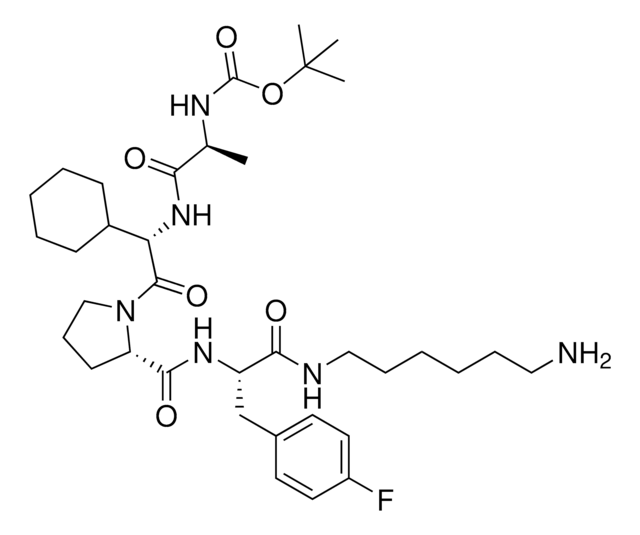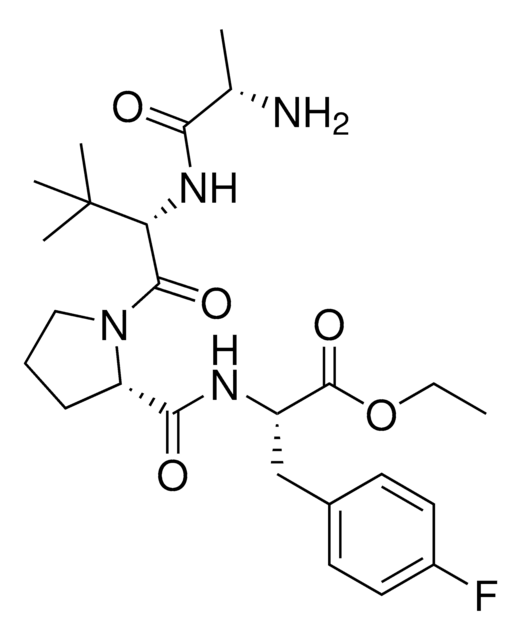917478
BocA1V1PF2
≥95%
Sinónimos:
(S)-2-((S)-1-((S)-2-((S)-2-((tert-Butoxycarbonyl)amino)propanamido)-3,3-dimethylbutanoyl)pyrrolidine-2-carboxamido)-3-(4-fluorophenyl)propanoic acid, AVP ligand, IAP E3 ligase lead for protein degrader research, SNIPER building block
About This Item
Productos recomendados
ligand
BocA1V1PF2
Nivel de calidad
Análisis
≥95%
formulario
powder
idoneidad de la reacción
reagent type: ligand
grupo funcional
carboxylic acid
temp. de almacenamiento
2-8°C
cadena SMILES
C[C@H](NC(OC(C)(C)C)=O)C(N[C@H](C(N1CCC[C@H]1C(N[C@H](C(O)=O)CC2=CC=C(C=C2)F)=O)=O)C(C)(C)C)=O
Categorías relacionadas
Aplicación
BocA1V1PF2 conjugates are also available for degrader synthesis. Browse our full synthesis offering here for streamlining SNIPER and PROTAC® degrader libraries: Degrader Building Blocks
916927 BocA1V1PF2-OC6-NH2 hydrochloride
917184 BocA1V1PF2-OC10-NH2 hydrochloride
917435 BocA1V1PF2-OPEG1-NH2 hydrochloride
917680 BocA1V1PF2-OPEG3-NH2 hydrochloride
Technology Spotlight: Degrader Building Blocks with Inhibitor of Apoptosis Protein (IAP) In Silico-Derived Ligands
Otras notas
Información legal
Producto relacionado
Código de clase de almacenamiento
11 - Combustible Solids
Clase de riesgo para el agua (WGK)
WGK 3
Punto de inflamabilidad (°F)
Not applicable
Punto de inflamabilidad (°C)
Not applicable
Certificados de análisis (COA)
Busque Certificados de análisis (COA) introduciendo el número de lote del producto. Los números de lote se encuentran en la etiqueta del producto después de las palabras «Lot» o «Batch»
¿Ya tiene este producto?
Encuentre la documentación para los productos que ha comprado recientemente en la Biblioteca de documentos.
Artículos
Targeted protein degradation reduces disease-relevant proteins in cells using small molecules, hijacking endogenous proteolysis systems.
Plate of 80 ligands against E3 ligase IAP designed by ComInnex; allows creation of bifunctional targeted protein degraders or molecular glues.
Protein Degrader Building Blocks are a collection of crosslinker-E3 ligand conjugates with a pendant functional group for covalent linkage to a target ligand.
Nuestro equipo de científicos tiene experiencia en todas las áreas de investigación: Ciencias de la vida, Ciencia de los materiales, Síntesis química, Cromatografía, Analítica y muchas otras.
Póngase en contacto con el Servicio técnico






